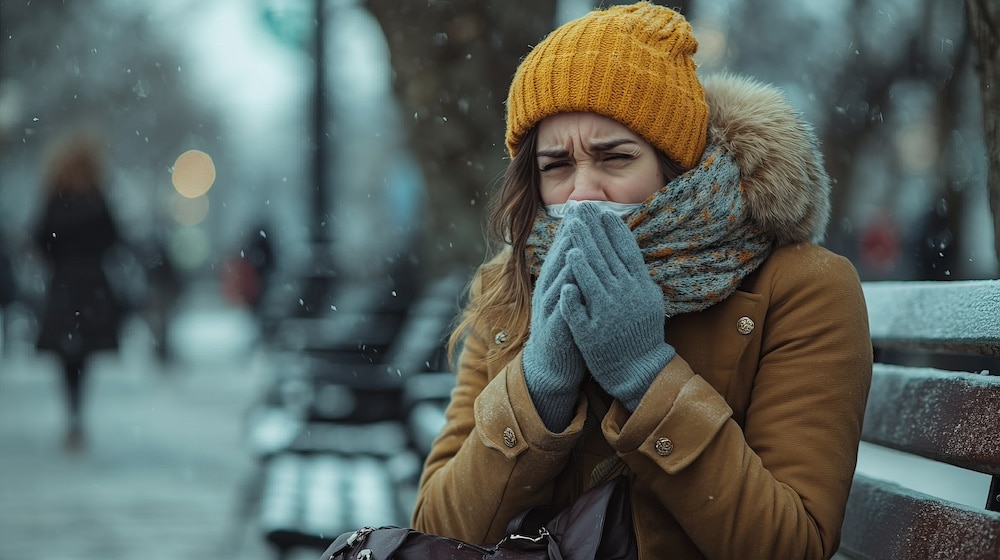Winter may bring cozy nights, holiday festivities, and spending time indoors with friends and family. Still, for many, it also comes with the unwelcome arrival of winter allergy symptoms. Recognizing and understanding how to manage these triggers can help you enjoy the colder months without any discomfort.
What Are Winter Allergy Symptoms?
Winter allergy symptoms can often be mistaken for a common cold or flu. However, allergies typically persist longer and lack fever or body aches. Common symptoms include:
– Persistent sneezing and nasal congestion
– Runny or itchy nose
– Watery, itchy, or red eyes
– Coughing or wheezing
– Scratchy or sore throat
– Skin irritation or eczema flare-ups
If these symptoms last more than a week or occur consistently in specific environments, allergies are likely to blame.
The Hidden Triggers Behind Winter Allergy Symptoms
Dust Mites
Dust mites thrive in warm, humid environments and are particularly problematic during winter when homes are sealed to keep out the cold. These microscopic pests inhabit bedding, carpets, and upholstered furniture, and their droppings can provoke sneezing, congestion, and other winter allergy symptoms.
Mold
Mold is a common winter allergen, flourishing in damp areas like basements, bathrooms, and near windows. Firewood stored indoors and improperly cleaned humidifiers can also spread mold spores, exacerbating symptoms.
Pet Dander
As we spend more time indoors with our furry companions, exposure to pet dander—tiny animal skin flakes often increases. This can lead to itchy eyes, sneezing, and other allergy symptoms, especially in poorly ventilated spaces.
Indoor Air Quality
With windows closed and heating systems running, indoor air quality can deteriorate during winter. Dust, mold spores, pet dander, and other allergens circulate more freely, intensifying allergy symptoms for those sensitive to these irritants.
Managing Winter Allergy Symptoms
Fortunately, there are effective strategies to reduce the impact of winter allergens and keep symptoms at bay:
1. Minimize Dust Mites
– Wash bedding and blankets weekly in hot water to eliminate dust mites.
– Use allergen-proof covers on mattresses and pillows.
– Vacuum carpets and furniture frequently with a HEPA filter vacuum.
2. Combat Mold Growth
– Fix leaks and promptly clean damp areas to prevent mold buildup.
– Use a dehumidifier to maintain indoor humidity levels below 50%.
– Clean humidifiers regularly to avoid mold accumulation.
3. Reduce Pet Allergens
– Limit pets’ access to bedrooms and upholstered furniture.
– Bathe and groom pets regularly to decrease dander.
– Use HEPA air purifiers to reduce airborne allergens.
4. Enhance Indoor Air Quality
– Replace HVAC filters often, choosing high-efficiency options.
– Use portable air purifiers in frequently used spaces.
– Occasionally, open windows for short periods to bring in fresh air, even in colder months.
When to Seek Professional Help
If winter allergy symptoms persist despite preventative measures, consulting an allergist can provide relief. Specialists can perform allergy testing to pinpoint specific triggers and recommend tailored treatments such as immunotherapy, antihistamines, or nasal sprays.
Embrace Winter Without the Sneezing
Winter allergies don’t have to overshadow the joys of the season. You can significantly reduce winter allergy symptoms by addressing common triggers like dust mites, mold, and poor indoor air quality. Small adjustments in your home environment, coupled with professional guidance when needed, can make a world of difference. At McGovern Allergy and Asthma Clinic, their team is dedicated to helping you manage allergies year-round. The expert team provides personalized care, including testing and treatment options tailored to your needs. Don’t let winter allergy symptoms hold you back—schedule an appointment today and take the first step toward a more comfortable, symptom-free season.

